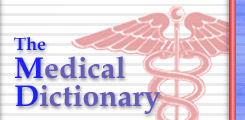ST. PETERSBURG, FLA. -- Wal-Mart enjoys a substantial pricing advantage over leading drug chains when it comes to health and beauty care items, according to the findings of a DSNRT price comparison.
On a market basket of 39 identical items, Wal-Mart's total of $286.91 was 15.8% less than Walgreens and 20% cheaper than CVS and Eckerd, both of which were within pennies of one another.
The Chicago-based retail consulting firm of McMillan/Doolittle developed the list of 61 branded health and beauty care items, 39 of which were found at each of the four retailers. For comparison purposes, a busy stretch of U.S. 19 in St. Petersburg, Fla., was selected because the competitive situation mirrors market characteristics that exist nationwide. Eckerd and Walgreens are long-established players in the market, while CVS is a more recent entry and had rented a large billboard across the street from its store to herald its arrival. All three compete against a Wal-Mart supercenter that opened last year and has quickly emerged as one of the retailer's highest-volume units. All four stores were located within a few miles of one another.
Confirmation of Wal-Mart's pricing advantage over drug chain retailers wasn't surprising, though McMillan/Doolittle senior partner Neil Stem had expected the gap to be wider. As long as Walgreens' pricing is within 15% of Wal-Mart, Stem said customers will be aware of the differential, but they don't object to it because of the convenience benefits offered by drug stores. And even though CVS and Eckerd were not as close to Wal-Mart as Walgreens, they were within 3.5% of their main drug chain competitor so that difference is inconsequential, according to Stem.
"Generally speaking, the rule in pricing is that zero to 5% is not really noticed by the customer. At 5% to 10% they notice, but don't switch," Stern said. "When the pricing difference starts to. get up around the 20% range, it really starts to jump out at consumers."
Therein lies one of the surprising findings of the pricing comparison. The most significant difference in pricing was found in health care products, such as pain relievers and cough and cold medicines, where Wal-Mart was nearly 27% cheaper than Walgreens.
"When you segment by category and find that Wal-Mart is the cheapest on health care products it is surprising, because that is considered the strong suit of drug stores," Stern said. "The difference is pretty jarring."
The economics of the drug chain business model don't allow them to beat or match Wal-Mart's pricing for prolonged periods of time, but that doesn't mean strong efforts weren't made in stores to communicate value to customers. At Eckerd, hundreds of shelf talkers in the cosmetics area touted 10% off and enabled Eckerd to beat CVS on price in that segment, but not Walgreens or Wal-Mart. At Walgreens, customers who clipped coupons from the Sunday circular could have saved $4 off the $39.99 shelf price of Crest Whitestrips, a price point that would have put them close to the $35.84 price at Wal-Mart. A coupon was also needed to save $3 off Walgreens' $6.99 shelf price for Revlon's Color Stay Mascara. Another half-dozen items at Walgreens were promoted with "hot buy" shelf talkers, even though the price was roughly in line with other drug chains.
Despite efforts to develop a list of dominant brands in common sizes across a range of categories, pricing comparisons in the health and beauty care categories are hampered by several factors. The abundance of SKUs from which drug chain retailers have to choose, particularly in the personal care area, and the limited amount of space available to display them requires careful editing of assortments.
Consequently, only about two-thirds of the items on the DSNRT shopping list could be found at every store. In almost every instance where a particular item couldn't be found, it was a matter of a retailer stocking the brand, but in a different quantity than listed. For example, each retailer stocked Johnson & Johnson's line of baby bath, lotion and shampoo, but in different quantities. Ironically, Wal-Mart offered a 9-ounce bottle of baby bath and lotion, while the drug stores offered the 15-ounce version. Only J&J's 22-ounce baby powder could be found at each store.
The stocking of different sizes of major brands may complicate market basket pricing comparisons, but that's not necessarily a bad thing for drug chains as it makes it harder for customers to compare prices, too.
COPYRIGHT 2002 Reproduced with permission of the copyright holder. Further reproduction or distribution is prohibited without permission.
COPYRIGHT 2002 Gale Group


